Climate-smart trees for inner-city environments
Henrik Sjöman and Andy Hirons
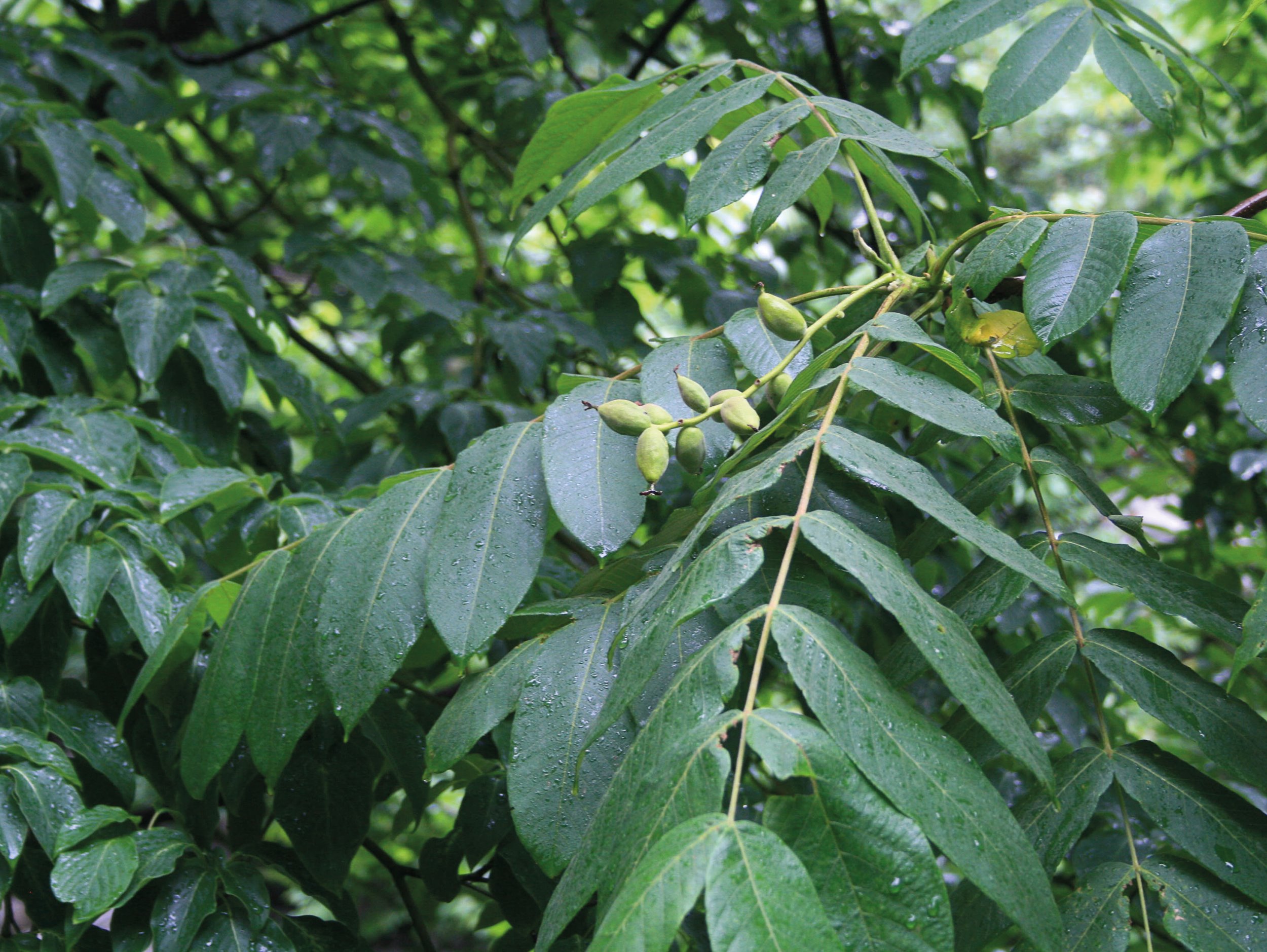
Japanese walnut with incipient fruit set.
In urban environments, tree selection is often a complex issue.
It is rarely enough for the tree to be able to develop successfully based on the given site’s growing conditions, such as soil and microclimate. Other factors that need to be taken into account during plant selection are the ability of the species to create more ‘technical’ added value for a city’s residents.
When selecting tree species for urban planting, it is becoming increasingly important to take into account the ability of the plant material to deliver important ecosystem services. An example of this is a tree’s potential to provide much-needed shade during the summer in places where people spend time, such as outdoor cafés, playgrounds and residential courtyards. These places should also be used and appreciated during the dark winter months when city-dwellers greatly appreciate and need to be able to enjoy every little bit of sunshine that is available: dense tree crowns casting deep shade are not cherished in winter.
Therefore, it is very important to know how a tree species appears at different parts of the year. Trees that offer satisfactory shading in summer and also have a sparse crown structure in winter have real merit in many urban situations because they do not block the winter sun. One group of trees that has this characteristic are the walnuts, so we would like to highlight two closely related and under-utilised species.
Manchurian walnut Juglans mandshurica
This species is sometimes referred to in Sweden as the ‘palm of the North’ because of its large and lush leaves. It is native to south-eastern Russia, the Korean peninsula and north-eastern China. In its natural range it occurs mainly in cool mountain environments, usually in river valleys or other rich sites with good soil moisture.
The Manchurian walnut develops into a broad vase-shaped tree 15-18 m high with a rounded to flat crown. Trees often grow as wide as they are tall and develop coarse trunk structures of a few stems supporting the crown. The tendency to develop one straight trunk is very weak to non-existent.
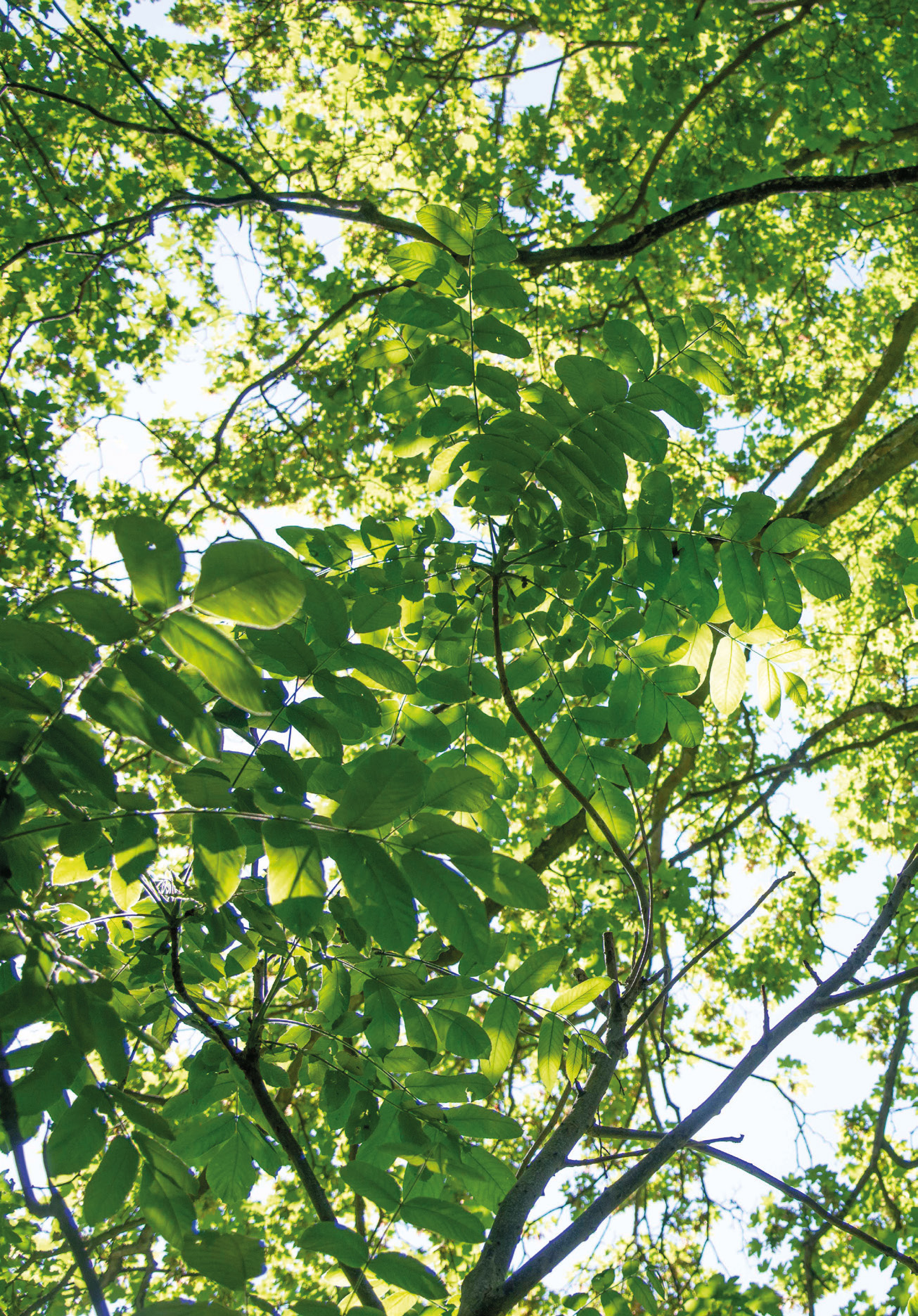
Large-leaved walnuts provide good shade in summer.
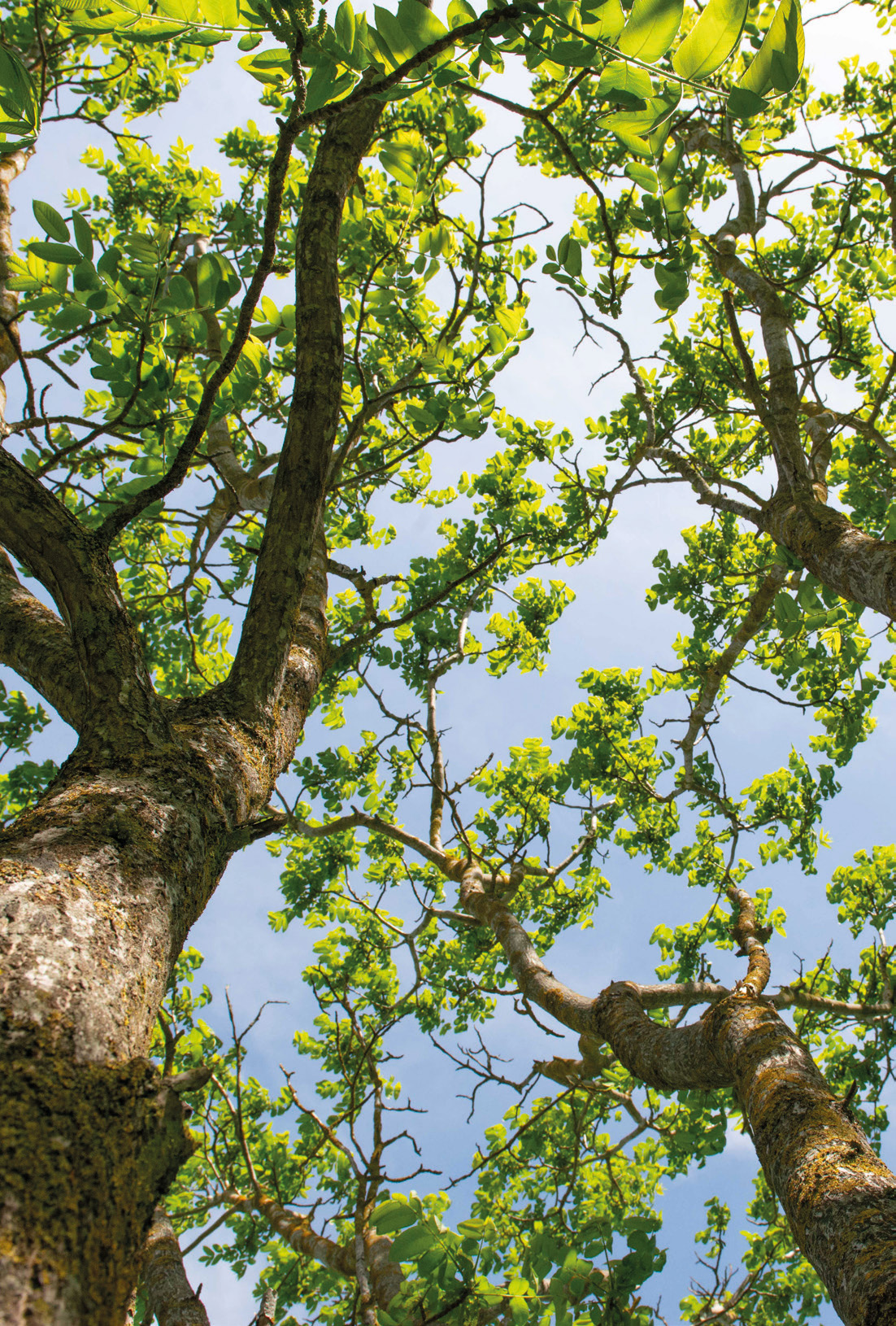
In winter, the branches of large-leaved walnuts are sparse, which means that they do not create a long cold shadow.
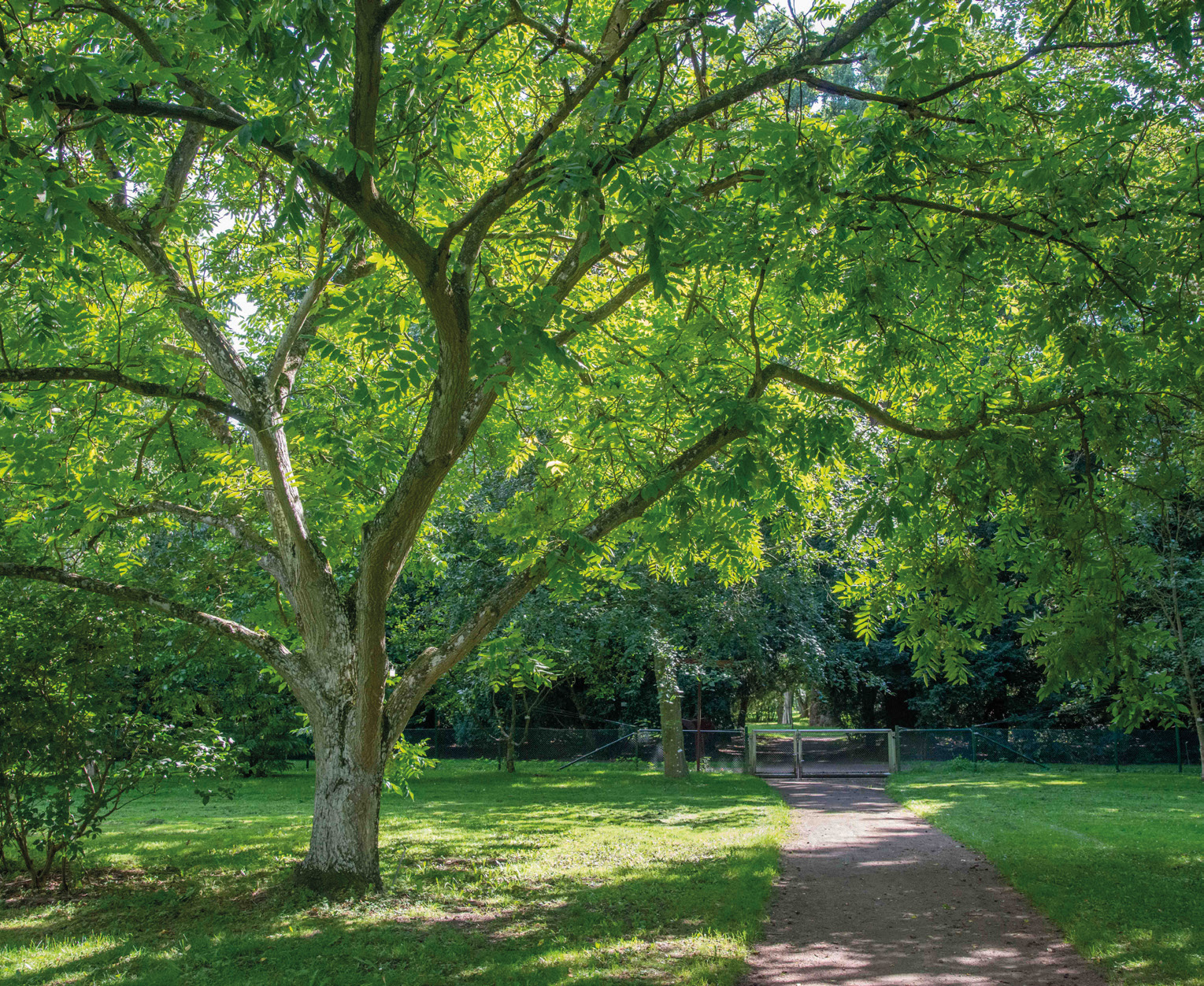
The Japanese walnut develops into a broad tree with a sparse and coarse trunk structure and only a few stems supporting the broad crown.
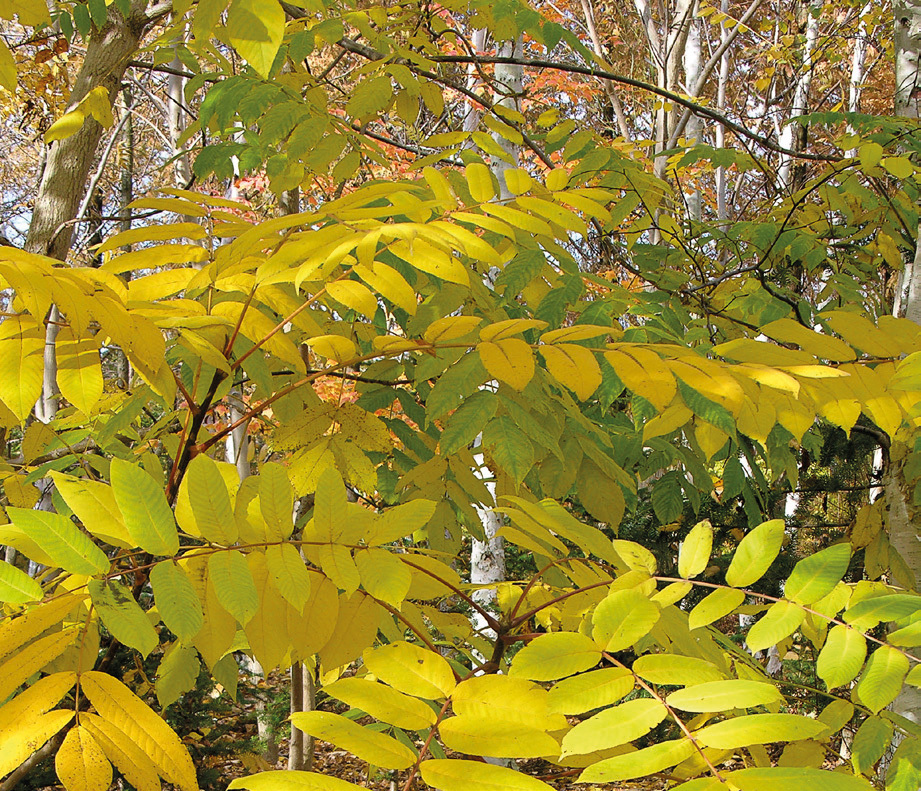
Japanese walnut in autumn colour.
The trunk is smooth, grey-brown and develops regular fissures over time. The leaves are very large, ranging from 50 to 120 cm, and turn a beautiful golden yellow in the autumn.
This is a very beautiful and useful tree for park and garden environments both as a solitary tree and as a very exotic element in naturalistic plantings. Hardiness is good, zones 2–5 (6). Due to the species’ continental background, it is very quick to flush its leaves in the spring, which does bring risk of damage by frost.
Japanese walnut Juglans ailanthifolia
For milder climates such as southern Sweden and the UK, the Japanese walnut has a similar form to the Manchurian walnut but is less likely to flush too soon. It requires good soil conditions with a good supply of soil moisture.
This tree is sometimes considered a variety of the Manchurian walnut (J. mandshurica var. sachalinensis), but here we treat it as a separate species since the name Juglans ailanthifolia is still the most frequently used in the tree nurseries of Europe.
In the wild it develops into a large tree of over 20 m. In cultivation it grows slightly smaller, at 15–17 m high. As a free-growing tree, it develops a very broad growth habit with a crown that splits early, resulting in a low, vase shape – which in turn creates a perfect climbing tree. The leaves are one of the species’ great assets: after a hot summer they can grow almost a metre long, usually 60–90 cm. The Japanese walnut is considered to be difficult to establish, especially when it is grown as balled and burlapped, and anyone specifying its use should instead consider container-grown trees. Well-established young trees can have impressive extension growth of almost 1 m, sometimes more, per year.
Dr Henrik Sjöman is an Associate Professor at the Swedish University of Agriculture Sciences and a Scientific Curator at Gothenburg Botanic Garden.
Dr Andrew Hirons is a Senior Lecturer in Arboriculture and Urban Forestry at University Centre Myerscough.
This article was taken from Issue 208 Spring 2025 of the ARB Magazine, which is available to view free to members by simply logging in to the website and viewing your profile area.